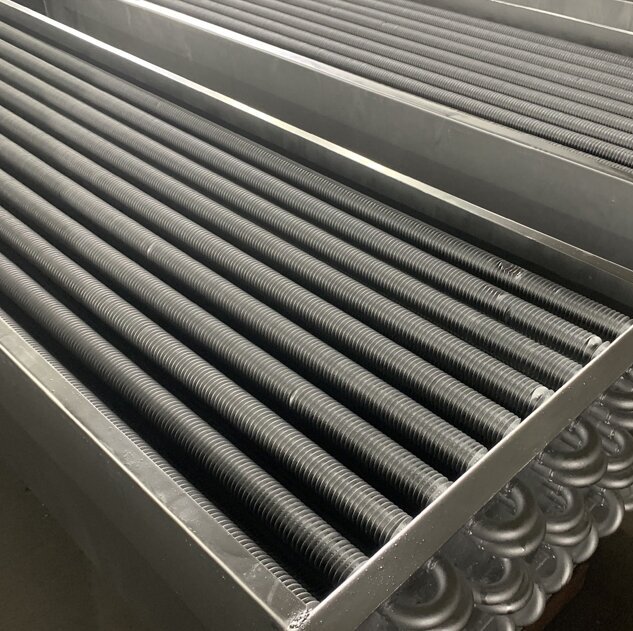How to choose finned tube for heat exchanger?
How to choose finned tube for heat exchanger?
A heat exchanger is to process one fluid transfers heat to another fluid. Therefore, whether to use finned tubes as heat transfer elements in the design of a heat exchanger depends on the relative size of the surface heat transfer coefficients of the two fluids.
(1) If the heat transfer coefficients on both sides of the tube differ greatly, fins should be installed on the side with small heat transfer coefficients.
When the surface heat transfer coefficient of the fluid inside and outside the tube differs greatly, the fluid with the smaller surface heat transfer coefficient should flow outside the tube, and finned tubes should be installed outside the tube to strengthen the convective heat transfer process.
Example 1: The economizer of the boiler, with water flowing in the pipe and flue gas flowing out of the pipe, should use fins on the flue gas side.
Example 2: For air cooler, liquid flows in the tube, air flows out of the tube, and fins should be added on the air side.
Example 3: For the steam generator, water boils in the tube, flue gas flows outside the tube, and fins should be added to the flue gas side. It should be noted that the side with small heat transfer coefficient should be placed outside the tube as much as possible during design to facilitate the installation of fins.
(2) If the heat transfer coefficient on both sides of the tube is very small, fins should be installed on both sides at the same time to enhance heat transfer. If there are structural difficulties, fins can be not added on both sides. In this case, if only one side of the fins is added, there will be no obvious effect on the increase of heat transfer.
When the heat transfer coefficient of the fluid surface inside and outside the tube is very small, in order to enhance the heat transfer and increase the heat transfer coefficient, both sides must be strengthened. At this time, fins can be installed outside the tube, and various spoilers can be used inside the tube. or low fins for reinforcement.
Example 1: The traditional tubular air preheater uses air inside the tube and flue gas outside the tube. Because it is gas to gas heat transfer, the heat transfer coefficient on both sides is very low, and it is difficult to add fins in the tube, so the tube has to be used up.
Example 2: Although the heat pipe air preheater is still heated by flue gas, the flue gas and air flow outside the pipe, so the flue gas side and air side can conveniently use finned tubes, which greatly increases the heat transfer.
(3) If the heat transfer coefficients on both sides of the tube are large, it is unnecessary to use finned tubes.
Example 1: When the water/water heat exchanger uses hot water to heat cold water, the heat transfer coefficients on both sides are high enough, so it is unnecessary to use finned tubes. However, in order to further enhance heat transfer, threaded tubes or corrugated tubes can be used instead of smooth tubes.
Example 2: For the condenser of the power plant, the condensation of water vapor is outside the pipe, and water is flowing inside the pipe. The heat transfer coefficients on both sides are very high, and in general, finned tubes are not required.


